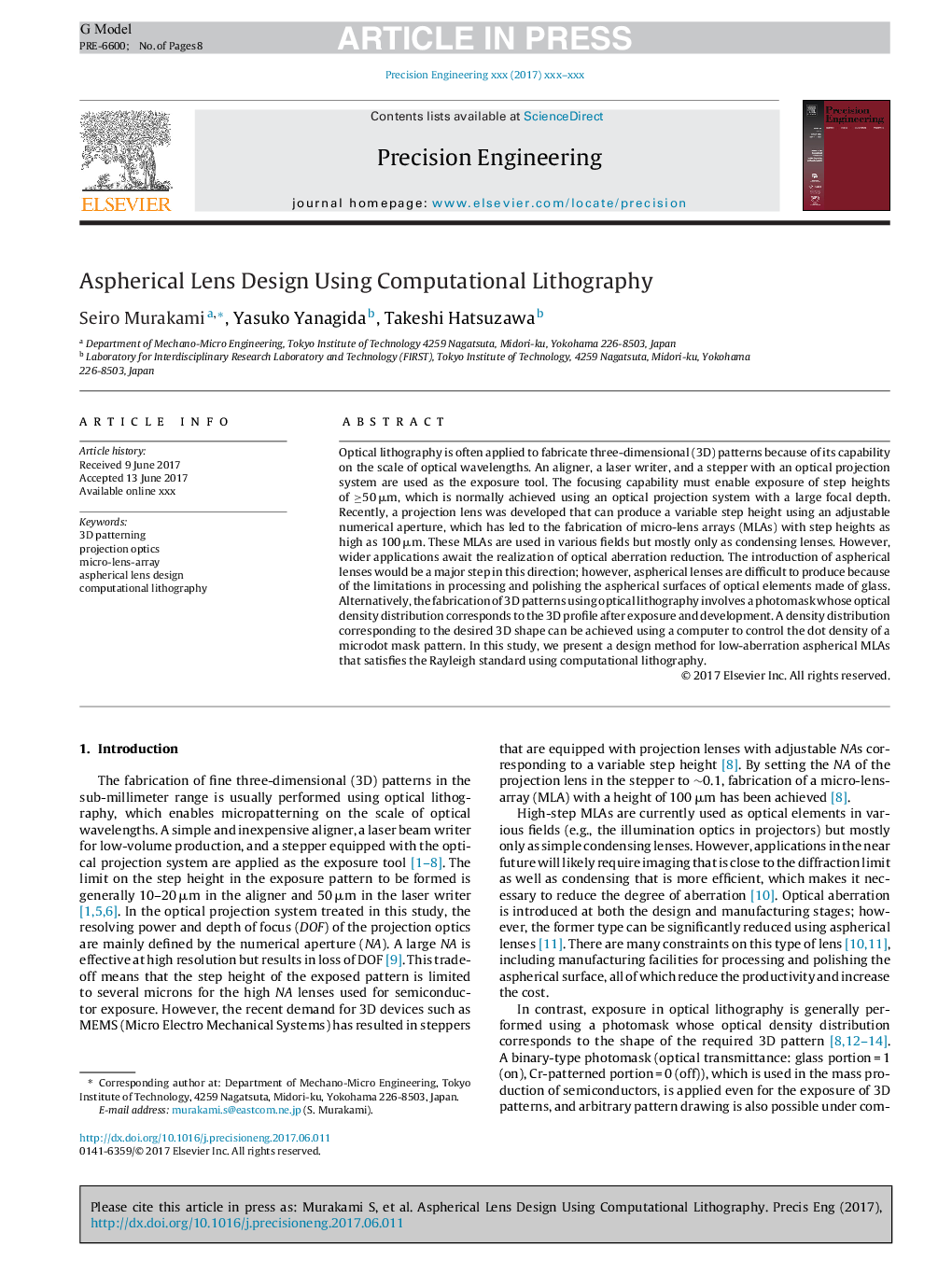ترجمه فارسی عنوان مقاله
طراحی لنز آسفریال با استفاده از لیتوگرافی محاسباتی
عنوان انگلیسی
Aspherical Lens Design Using Computational Lithography
| کد مقاله | سال انتشار | تعداد صفحات مقاله انگلیسی |
|---|---|---|
| 152510 | 2017 | 8 صفحه PDF |
منبع

Publisher : Elsevier - Science Direct (الزویر - ساینس دایرکت)
Journal : Precision Engineering, Volume 50, October 2017, Pages 372-379

